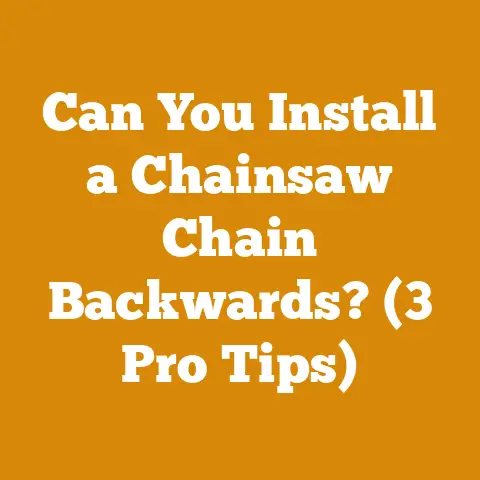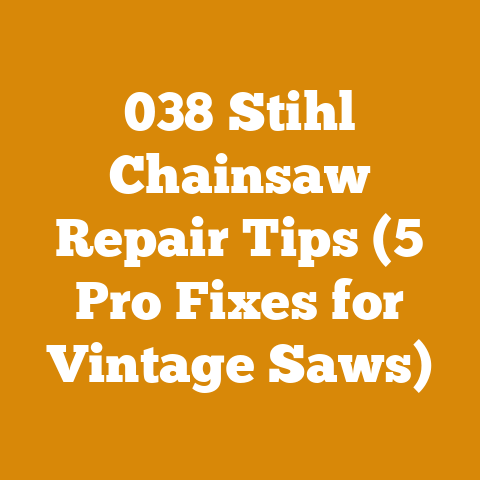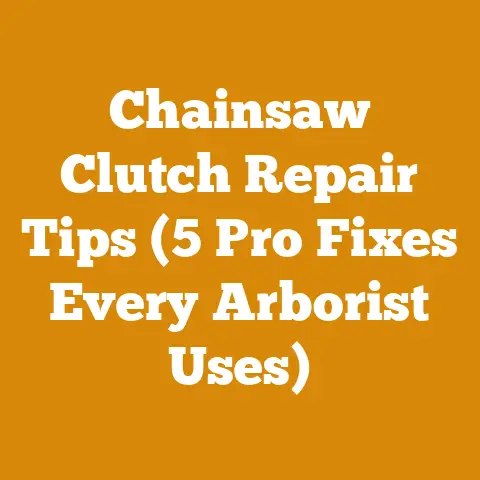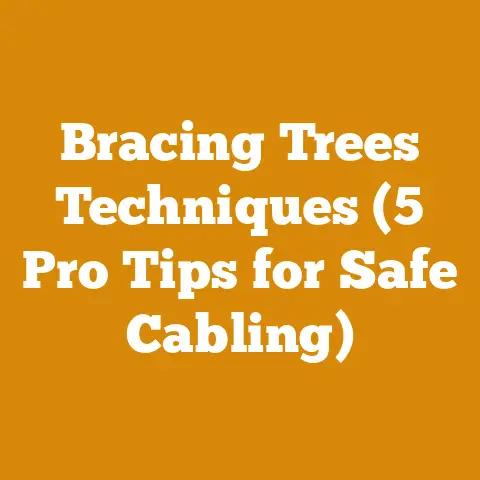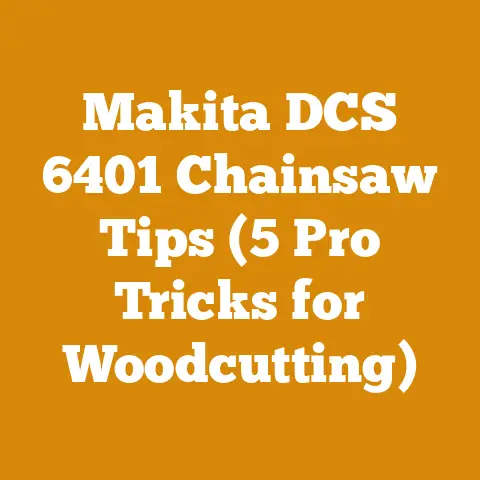Echo String Trimmer Brush Cutter: Best Model for Tough Woodcutting (Pro Tips)
Echo String Trimmer Brush Cutter: Your Ticket to Taming Tough Wood – And How to Budget for It
Let’s face it: battling overgrown brush and saplings can feel like a never-ending war. You need a weapon that’s both powerful and precise. That’s where an Echo string trimmer brush cutter comes in. It’s not just a tool; it’s a solution. I’ve spent years wrestling with unruly landscapes, and I’ve learned that the right equipment can make all the difference.
This isn’t just about buying a tool; it’s about making a smart investment. Whether you’re clearing land for a new project, maintaining trails, or simply keeping your property in check, understanding the costs upfront is crucial. So, grab a cup of coffee, and let’s get started.
Unveiling the Power of Echo String Trimmer Brush Cutters
Echo has carved a niche for itself in the world of outdoor power equipment, and for good reason. Their string trimmer brush cutters are known for their durability, power, and reliability. But what makes them so effective against tough wood?
The Key Features That Matter
- Engine Power: Echo models come with varying engine sizes, typically ranging from 21.2cc to 58.2cc. For tough woodcutting, I recommend models with at least 30cc. More power means less strain on the engine and faster cutting times.
- Cutting Attachments: These aren’t your average string trimmers. They can handle brush cutter blades and metal clearing saws. The right attachment can slice through saplings and thick brush with ease.
- Ergonomics: Extended use can take a toll on your body. Look for models with comfortable handles, vibration reduction, and adjustable harnesses. Trust me, your back will thank you.
- Durability: Echo trimmers are built to last. They use high-quality components and undergo rigorous testing. This means they can withstand the abuse of regular use in demanding conditions.
Why Echo Stands Out
I’ve used various brands over the years, but I’ve found Echo’s reputation for reliability to be well-deserved. Their trimmers start easily, run smoothly, and hold up to heavy use. Plus, their extensive dealer network makes finding parts and service a breeze.
Choosing the Right Model for Your Needs
The “best” model depends on your specific needs and budget. Here are a few of my top recommendations:
- For Light to Medium Brush: Echo SRM-225. This is a solid all-arounder that’s perfect for clearing smaller brush and weeds. It’s lightweight, easy to handle, and affordable.
- For Heavy-Duty Cutting: Echo SRM-2620T. This model packs a punch with its powerful engine and heavy-duty construction. It’s ideal for tackling thick brush, saplings, and even small trees.
- For Maximum Power and Versatility: Echo SRM-410U. This professional-grade trimmer is designed for demanding jobs. It features a large engine, a comfortable harness, and a wide range of attachments.
The True Cost of Taming the Wild: A Detailed Breakdown
Okay, let’s get down to brass tacks. How much will it really cost to get your hands on an Echo string trimmer brush cutter and use it effectively?
Initial Purchase Price
This is the most obvious cost, but it’s important to do your research. Prices vary depending on the model, retailer, and any ongoing promotions.
- Echo SRM-225: Expect to pay around \$200-\$300.
- Echo SRM-2620T: This model typically costs between \$400-\$500.
- Echo SRM-410U: Be prepared to shell out \$600-\$800 for this top-of-the-line trimmer.
These are just estimates. I recommend checking multiple retailers, both online and in-store, to find the best deal. Also, consider buying a refurbished model to save some money.
Essential Accessories and Attachments
The trimmer itself is just the beginning. You’ll also need a few essential accessories and attachments to get the job done right.
- Brush Cutter Blade: A high-quality brush cutter blade is essential for cutting through tough wood. Expect to pay around \$20-\$40 for a good one.
- Metal Clearing Saw: For larger saplings and small trees, a metal clearing saw is a must-have. These typically cost between \$30-\$60.
- Safety Gear: Don’t skimp on safety gear. You’ll need safety glasses, hearing protection, gloves, and sturdy boots. This will set you back around \$50-\$100.
- Harness: A comfortable harness can make a huge difference when you’re using a brush cutter for extended periods. These range from \$30-\$80.
- String: You’ll need trimmer line for lighter tasks and general maintenance. A spool of quality string costs around \$10-\$20.
Fuel and Oil Costs
Echo trimmers typically run on a mix of gasoline and two-stroke oil. The exact ratio will vary depending on the model, but it’s usually around 50:1.
- Gasoline: The cost of gasoline fluctuates, but let’s assume an average price of \$4 per gallon.
- Two-Stroke Oil: A quart of two-stroke oil costs around \$10-\$15.
The amount of fuel you’ll use depends on how often you use the trimmer and the type of work you’re doing. A good rule of thumb is to budget around \$10-\$20 per month for fuel and oil.
Maintenance and Repair Costs
Like any piece of machinery, Echo trimmers require regular maintenance to keep them running smoothly.
- Air Filter: Replace the air filter every few months, or more often if you’re working in dusty conditions. Air filters cost around \$5-\$10.
- Spark Plug: Replace the spark plug every year or two. Spark plugs cost around \$3-\$5.
- Grease: Grease the trimmer head regularly to keep it lubricated. A tube of grease costs around \$5-\$10.
- Sharpening: Sharpen the brush cutter blade or metal clearing saw regularly to maintain its cutting performance. You can do this yourself with a file, or you can take it to a professional sharpening service. This will cost around \$10-\$20 per sharpening.
In addition to routine maintenance, you may also encounter unexpected repairs. I recommend setting aside a small budget for repairs, just in case. A good rule of thumb is to budget around \$50-\$100 per year for repairs.
Labor Costs (If Applicable)
If you’re hiring someone to do the work for you, you’ll need to factor in labor costs. The hourly rate for brush clearing varies depending on your location and the experience of the worker.
- Average Hourly Rate: Expect to pay around \$20-\$40 per hour for brush clearing labor.
The total labor cost will depend on the size of the area you’re clearing and the density of the brush. Get several quotes from different contractors to find the best deal.
Additional Costs to Consider
- Storage: You’ll need a safe and dry place to store your trimmer when it’s not in use. If you don’t have a garage or shed, you may need to purchase a storage container.
- Transportation: You’ll need a way to transport your trimmer to and from the job site. If you don’t have a truck or trailer, you may need to rent one.
- Permits: In some areas, you may need a permit to clear brush or cut trees. Check with your local authorities to see if any permits are required.
Real-World Examples: Cost Breakdowns for Different Scenarios
To give you a better idea of the costs involved, let’s look at a few real-world examples.
Scenario 1: Clearing a Small Yard (DIY)
- Area: 1/4 acre
- Brush: Light to medium brush and weeds
- Tools: Echo SRM-225, brush cutter blade, safety gear
- Labor: DIY
- Estimated Costs:
- Trimmer: \$250
- Blade: \$30
- Safety Gear: \$75
- Fuel and Oil: \$10
- Maintenance: \$10
- Total: \$375
Scenario 2: Clearing a Large Lot (DIY)
- Area: 1 acre
- Brush: Thick brush, saplings, and small trees
- Tools: Echo SRM-2620T, brush cutter blade, metal clearing saw, safety gear, harness
- Labor: DIY
- Estimated Costs:
- Trimmer: \$450
- Blade: \$30
- Saw: \$50
- Safety Gear: \$100
- Harness: \$50
- Fuel and Oil: \$30
- Maintenance: \$20
- Total: \$730
Scenario 3: Clearing a Wooded Area (Hired Labor)
- Area: 1/2 acre
- Brush: Thick brush, saplings, and small trees
- Tools: Contractor-provided
- Labor: Hired
- Estimated Costs:
- Labor: \$30/hour x 40 hours = \$1200
- Permits (if required): \$100
- Total: \$1300
Pro Tips for Slashing Costs Without Sacrificing Quality
Alright, you’ve seen the potential costs. Now, let’s talk about how to save money without compromising on the quality of your work. I’ve learned a few tricks over the years that can make a big difference.
Buy Smart, Not Just Cheap
It’s tempting to go for the cheapest option, but in the long run, it’s often more expensive. A low-quality trimmer will break down more often and won’t be as effective. Invest in a quality Echo trimmer that will last for years.
Consider a Refurbished Model
Refurbished trimmers are often available at a significant discount. These are typically trimmers that have been returned to the manufacturer for repair or cleaning. They’re usually in good working condition and come with a warranty.
Take Advantage of Sales and Promotions
Keep an eye out for sales and promotions from retailers. You can often find discounts on Echo trimmers and accessories, especially during holidays and end-of-season sales.
Buy in Bulk
If you use a lot of fuel, oil, or trimmer line, consider buying in bulk. This can save you a significant amount of money over time.
Maintain Your Trimmer Regularly
Regular maintenance is essential for keeping your trimmer running smoothly and preventing costly repairs. Clean the air filter, replace the spark plug, and grease the trimmer head regularly.
Sharpen Your Blades
A dull blade is not only less effective, but it also puts more strain on the engine. Sharpen your brush cutter blade or metal clearing saw regularly to maintain its cutting performance.
Learn to Repair Your Trimmer Yourself
Learning to repair your trimmer yourself can save you a lot of money on labor costs. There are plenty of online resources and tutorials that can help you learn the basics of trimmer repair.
Rent, Don’t Buy (Sometimes)
If you only need a brush cutter for a one-time project, consider renting one instead of buying it. This can save you a significant amount of money, especially if you don’t plan to use the trimmer very often.
Negotiate Labor Costs
If you’re hiring someone to do the work for you, don’t be afraid to negotiate the labor costs. Get several quotes from different contractors and see if they’re willing to lower their prices.
Do It Yourself (If You Can)
If you’re physically capable and have the time, consider doing the work yourself. This can save you a significant amount of money on labor costs.
Budgeting for Your Brush Clearing Project: A Step-by-Step Guide
Now that you understand the costs involved and how to save money, let’s create a budget for your brush clearing project.
Step 1: Define the Scope of the Project
What area do you need to clear? What type of brush and trees are you dealing with? The more detailed your plan, the more accurate your budget will be.
Step 2: Estimate the Time and Resources Required
How long will it take to complete the project? How much fuel, oil, and trimmer line will you need?
Step 3: Research the Costs of Materials and Labor
Get price quotes for trimmers, accessories, fuel, oil, and labor (if applicable).
Step 4: Create a Detailed Budget
List all of the costs associated with the project, including the initial purchase price of the trimmer, accessories, fuel, oil, maintenance, repairs, and labor.
Step 5: Add a Contingency Fund
Unexpected costs can arise during any project. Add a contingency fund of 10-20% to cover any unforeseen expenses.
Step 6: Track Your Spending
As you complete the project, track your spending to make sure you’re staying within budget.
The Long-Term Value: Investing in the Right Tool for the Job
While the initial costs of an Echo string trimmer brush cutter may seem daunting, it’s important to consider the long-term value. A quality trimmer will last for years, saving you time and money in the long run. Plus, it will make your property look great and increase its value.
A Worthwhile Investment
I’ve seen firsthand how a good brush cutter can transform a property. It’s not just about clearing brush; it’s about creating a more usable and enjoyable space. Whether you’re clearing land for a garden, maintaining trails, or simply keeping your property in check, an Echo string trimmer brush cutter is a worthwhile investment.
Beyond the Financials
Don’t forget the non-financial benefits. Clearing brush can be a satisfying and rewarding experience. It’s a great way to get exercise, enjoy the outdoors, and take pride in your property.
Final Thoughts: Take Control of Your Landscape (and Your Budget)
Choosing the right Echo string trimmer brush cutter and budgeting for its use can seem like a daunting task. But with a little research and planning, you can take control of your landscape and your budget. Remember to consider your specific needs, research the costs involved, and take advantage of cost-saving tips. With the right tool and a solid budget, you can conquer even the toughest woodcutting challenges. So, get out there, tame the wild, and enjoy the fruits of your labor!
Actionable Takeaways and Next Steps
- Assess Your Needs: Determine the type and amount of brush you need to clear.
- Research Models: Compare different Echo models to find the best fit for your needs and budget.
- Get Price Quotes: Shop around for the best deals on trimmers, accessories, and labor.
- Create a Budget: Develop a detailed budget that includes all costs associated with the project.
- Start Clearing: Once you have your trimmer and your budget in place, it’s time to start clearing brush!
Appendix: Useful Resources and Links
- Echo Website: www.echo-usa.com
- Local Echo Dealers: Search online for Echo dealers in your area.
- Online Forums: Join online forums dedicated to outdoor power equipment.
- YouTube Tutorials: Watch YouTube tutorials on trimmer maintenance and repair.
- Local Extension Office: Contact your local extension office for advice on brush clearing and land management.
By following these steps and utilizing these resources, you’ll be well on your way to successfully budgeting for and conquering your brush clearing project with an Echo string trimmer brush cutter. Happy cutting!


